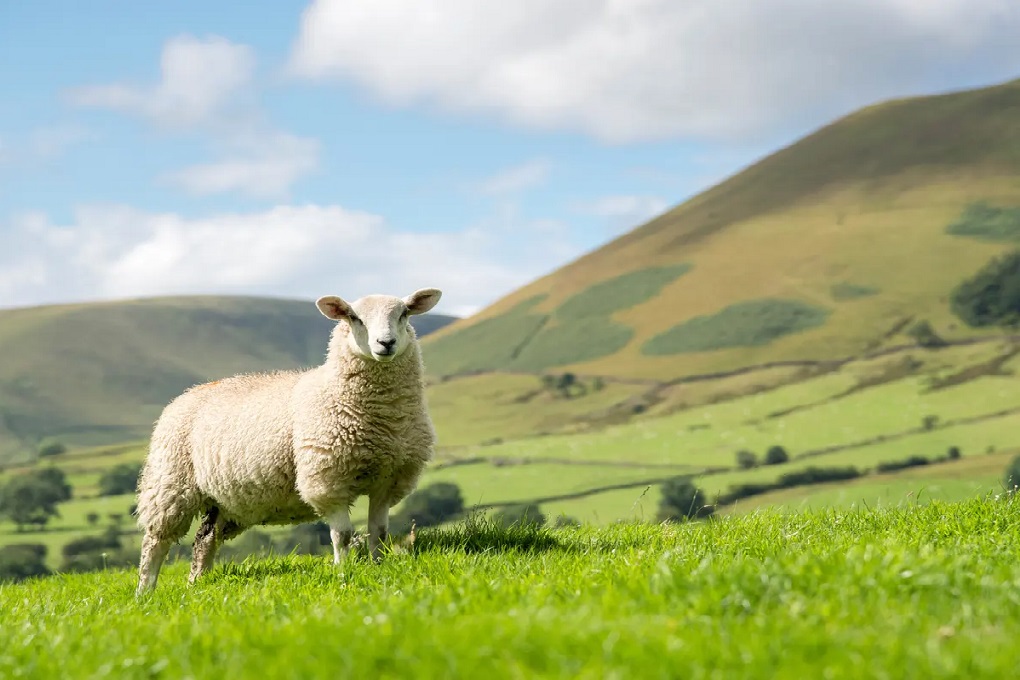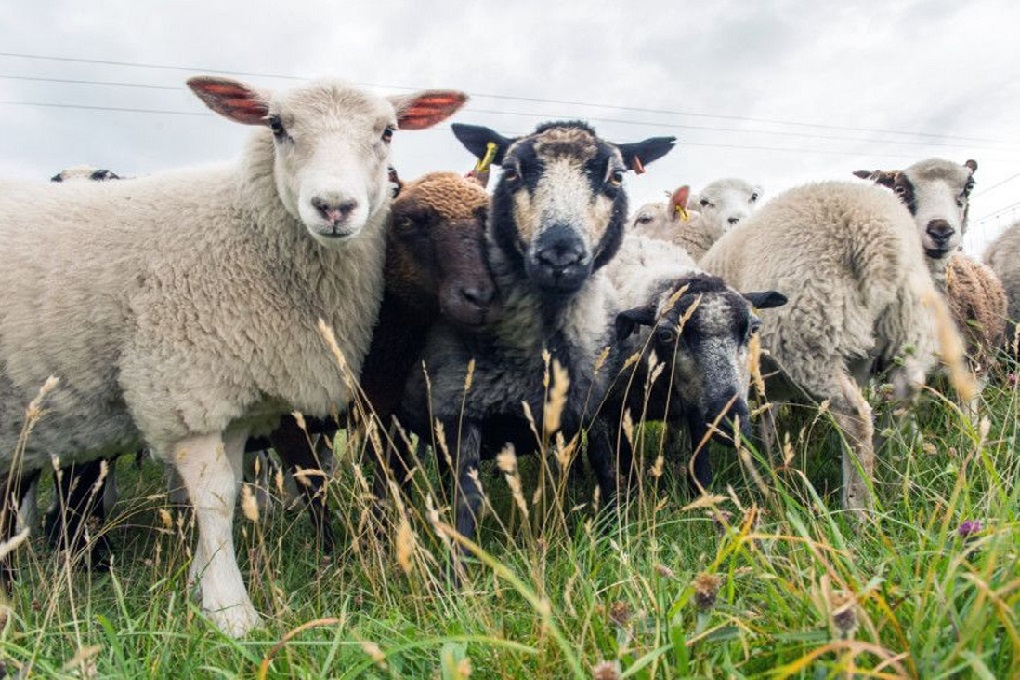Wee History of Scotland’s Sheep
In Pursuit of the Cute
There are more sheep in Scotland than people, so finding some cutesy sheep to photograph should be easy, in Highland or Lowland. This page offers a beginner’s guide to road-side sheep-spotting. How to tell a Blackface from a Cheviot, for instance. The clue can be in the name.
There are some things in Scotland that the locals hardly notice but that visitors (especially from the USA) find charming. One of these is sheep.
There are more sheep than people in Scotland – on almost 15,000 farms there are 6.83 million of these fleecy grazers. (Yes, it’s hard to find a synonym for sheep.)
Of that figure only 1% are rams. Yet this busy testosterone-loaded minority manage annually to help generate 49% of the total, which is made up of lambs. Och, that’s enough percentages. Basically, there are a lot of sheep in Scotland and many of them are cute. Especially the lambs.
And where do you find these sheep? All over the countryside, with the greatest concentration in the Scottish Borders with 17% of the total. (Sorry – another percentage crept in there.)
Along with Dumfries and Galloway, the south of Scotland has one-third of all of Scotland’s sheep. (Oh, stop, stop.) Sheep in the south of Scotland, by the road to St Abb’s Head, with the impressive cliffs running from St Abb’s Head off to the north-west.
Thus, the Scottish Highlands, with their extensive areas of poor high ground, are certainly associated with sheep, mostly of the kind that stroll in front of cars on unfenced roads, but the greatest numbers are actually to be found in the south. You probably just need to be re-assured that if you like sheep, you’re going to see plenty in Scotland, and can photograph them to your heart’s content. But here is a greatly simplified (and possibly agriculturally dubious) guide to the kind of sheep you’ll find wandering into the picture-frame.
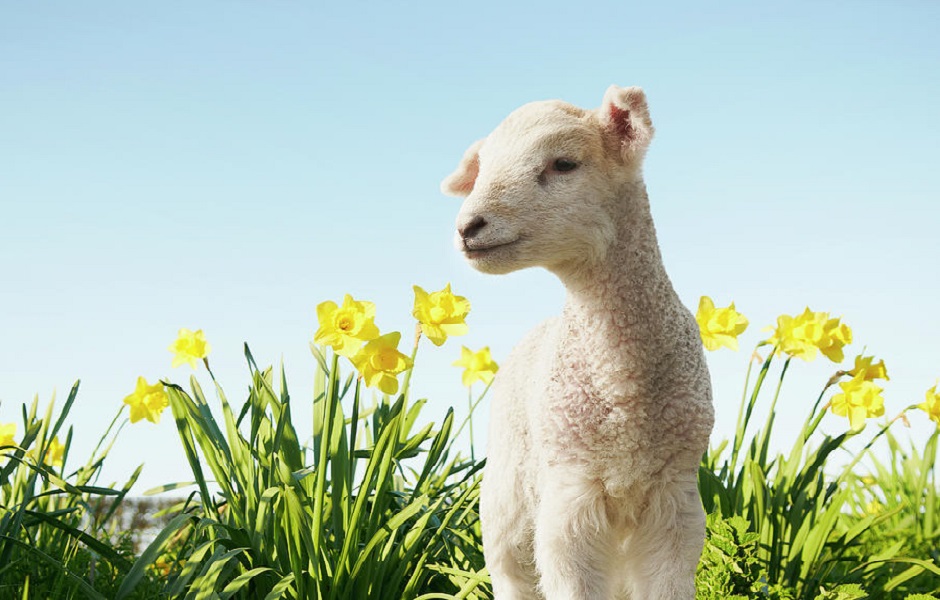
If you are a serious farming-type, then what on earth are you doing on this page? This is for kindly, middle-of-the-road visitors with a taste for the dinky and, uhmm, kinda pretty (but with four legs).
The National Sheep Association (who knew?) tells us there are more than 90 breeds and crosses if you include England in the figure. So, here goes. Two breeds of sheep prevail – or, at least, are noticed by me – in Scotland.
The first is the black face. It is easily recognized by its…wait, do I really have to finish this sentence? It is the commonest and probably the hardiest sheep you find here. Actually, there can be white on its face as well, according to that august body the Blackface Sheep Breeders Association. (Founded in 1901.) In fact, their specification is worth quoting in full: “All Blackfaces are horned, with black or black and white face and legs. The fleece should be free of black fiber and can vary from short, fine wool used for carpets and tweeds to strong coarse wool, which is sold mainly for the Italian mattress trade.” Well, I don’t suppose you knew that either, eh? Just remember the Scottish connection the next time you find yourself on an Italian’s mattress.
John 10:27 – “My sheep listen to My voice; I know them and they follow me.”
Even in winter in the far North-East (Buchan), there are sheep outside. Bleak, isn’t it? Anyway, the other really common sheep is the Cheviot. It is very much a conventional sheep: dirty cream colored, leg in each corner, looks cute as long as it is quite far away. It was originally associated with the high Border grounds and its ancestors were kept by the monks who laid the foundations of the Scottish Borders textile industry, way back in time. Other sheep are available here in Scotland. But you don’t need to know too much detail – because, as we mentioned earlier, you’d be perfectly happy with some nice sheep pictures.
But, OK, here’s just one more to look out for: the Texel, which looks like an average sheep but with an unattractive slightly pig-like face (IMHO). It’s not very common. And expensive, or so I’m told. It’s a Lowland sheep, the softie… Then there are the primitive sheep (as opposed to the sophisticated sheep we’ve been describing up to now) such as the Soay sheep. This ancient type is small, usually in shades of brown, and often kept by the sort of folk who also keep llamas (and probably goats). There are also sheep that just want to do something different. Best example is the North Ronaldsay sheep. Can you believe it? There’s a whole page on that link about this wacky sheep. Note wall to keep sheep off most of the island and on the shore or possibly the golf course. Lots more going on in this picture, explained on our (gasp) dedicated page on the sheep of North Ronaldsay. North Ronaldsay sheep express their individuality by eating seaweed. They have a baleful, wild-eyed look about them (or maybe it’s just that they’ve never really liked seaweed) but add a certain idiosyncratic charm to the island of North Ronaldsay. Furthermore, while most places have walls to keep sheep in, the island of North Ronaldsay has a continuous wall right around the island to keep the sheep out and down by the shore. They are so strange that I’ve already written a page about these unique Orkney sheep. Did I mention that? It’s unmissable. (All right, that’s enough, Ed.)
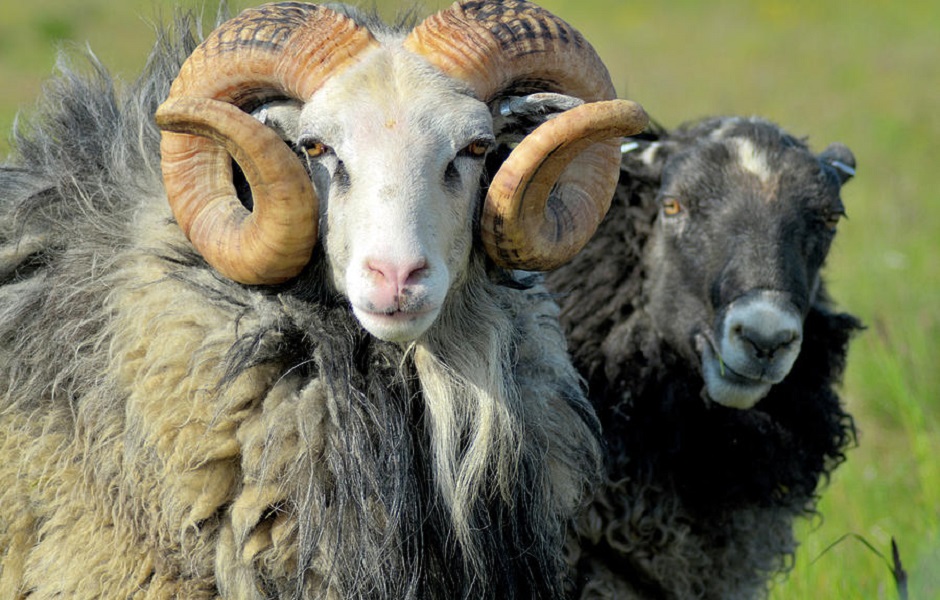
How do sheep spend their time? A typical year, say, in the higher ground of the Scottish Borders, runs as follows. And note the specialist sheepy vocabulary you need to understand. Lambing starts in late spring, down in the valleys. The lambs are counted and marked in June and then spend the summer on the hill pasture. Sheep in Scotland don’t have many hobbies.
Sometimes if a sheep produces twins then they will all be kept on the lower fields where the grazing is better for the mother. Late June sees the start of clipping, first with the rams and the hoggs (good quality sheep from the previous year’s lambing). In July the ewes (female sheep) are clipped. There aren’t a lot of sheep shearers about, these days, so they are kept pretty busy. It’s a sweaty but sociable affair, on many farms.
In September and October, the lambs are weaned and selected for market. Often these go to farms in other parts of Scotland with better grazing for fattening over winter. Next come the ram sales in October, another busy time for shepherds. Draft (old) ewes then go for sale in October and November. The traditional date for putting the tups (rams) out to the ewes is 22nd November. During tup time the flocks are closely attended to ensure they stay on the allocated heft (hill portion) with the chosen tups.
Blackface sheep are quite territorial when it comes to the heft – the bit of the hill to which they are accustomed. They even teach their offspring that this is their home range. In winter, a careful eye is kept on the weather. In bad conditions, the sheep may be taken off the highest ground and fed hay or silage in the lower fields. Otherwise they tough it out and find their own shelter.
One lamb means back to the hill ground until it’s time to give birth, when they are taken down to the valley fields. Two lambs can mean lower ground and extra feeding straightaway. Sheep that are barren are described as ‘yeld’. And then it’s time to start the yearly cycle all over again. (Oh, and finally, here’s another good sheepy word: fank. A fank is a sheep handling facility on the hill, consisting of gates and pens and traditional drystane dykes.)
One very important function of sheep in Scotland, from a visitor point of view, is to provide foreground interest by lying around in random yet somehow picturesque positions. Right, you know we had a kind of shared understanding earlier? You know that I know you’re only reading this because you think sheep are cuddly or picturesque. And maybe because you might see some on your Scottish trip. (Well, that’s for sure…) But bear with me. The mention of sheep sales above has reminded me that no sheep narrative is complete without a mention of the Kelso Ram Sales. It’s like the Oscars of the ovine world. (I’m so pleased to finally find a place for that adjective.)
I recall, years ago, when having to write enthusiastic sentiments for the visitor events listings compiled by our beloved national tourist board, there was always an entry for the Kelso Ram Sales. This was, apparently, a significant event (for visitors?) in the Scottish Borders in September. Wait, I said the Oscars for sheep above when I meant to say the Baaahftas (Bafta – An award presented by the British Academy of Film and Television Arts.) It wasn’t as if it was like the Edinburgh Festival or anything. But to this day it remains Europe’s largest one day ram sale and turns over more than £3 million in one day of selling!
Oh, all right, just one more. Sheep posing at sunset. It’s an emotional subject, the story of the Highlands and what happened to the native population. The shorthand version of ‘The Clearances’ is that the folk were cleared out by heartless landlords to make way for sheep, which were more profitable than tenants’ rents. When the infamous Duke of Sutherland (he of Dunrobin Castle) was asked to raise more Highlanders to fight in Britain’s war in the Crimea, he sent out his factor (manager) James Loch round his estates to drum up support. This was in 1854 when press and Parliament were asking why there were so few Highland regiments active in the war. It is said he was told by the locals – or at least those that were still there: “We have no country to fight for! You robbed us of our country and gave it to the sheep. Therefore, since you have preferred sheep to men, let sheep defend you!” At least, that’s how the story goes.
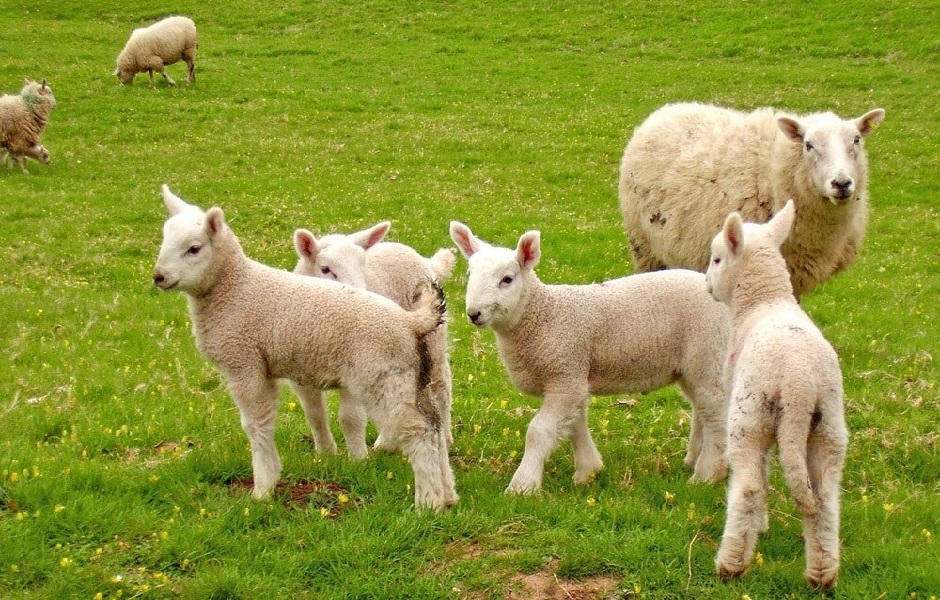
Certainly, the spread of the blackface sheep into the north is well documented. It was north of the Great Glen by 1800. The Cheviot, in a kind of ovine (ahem) pincer movement, was in Caithness by around 1790. The way the poor sheep get the blame for this, you’d almost think they got together and planned it. Of course, the sheep were merely the most obvious sign of what the landlords referred to as ‘improvements’.
Sheep in Scotland are cute but, let’s face it, Highland cattle are even more photogenic and (special tip) you can see them both together sometimes at Duirlnish, not far from Kyle of Lochalsh. Check them out as part of your Skye excursion perhaps. Note the coos in the far background!
It’s true that the Highlanders hated the sheep and the shepherds who took over their glens, with the population cleared to the coast or faced with emigration. However, sadly, the Highlands were facing depopulation even without the incomers.
And it’s doubly ironic that, while landlords thought their sheep were a good thing when wool prices were high – for example, during the Napoleonic Wars – by the mid-19th century, they were having second thoughts.
The way to make money, it seemed back then, was to make the ground into a sporting estate, don’t you know…get rid of the sheep and encourage the deer…and it’s a way of thinking that you can still find today.
So, that’s just a tiny bit of the background to those lovable woolly things you like to see on your Scottish peregrinations. Sure, they are still an important element in the Scottish rural landscape today, whether munching green pasture, safely corralled in the Lowlands, or balefully chewing perilously close to the verge of some little Highland unfenced byway (aka ‘the main road’). And where would the Italian mattress trade be without them?
Article Credit: Must See Scotland – https://www.must-see-scotland.com/sheep-in-scotland
Photo Credit – The Guardian
Photo Credit – The Scotsman
Photo Credit – SGB Media Online
Photo Credit – Peter Mason
Photo Credit – Caro Villano
Photo Credit – Questions and Answers


